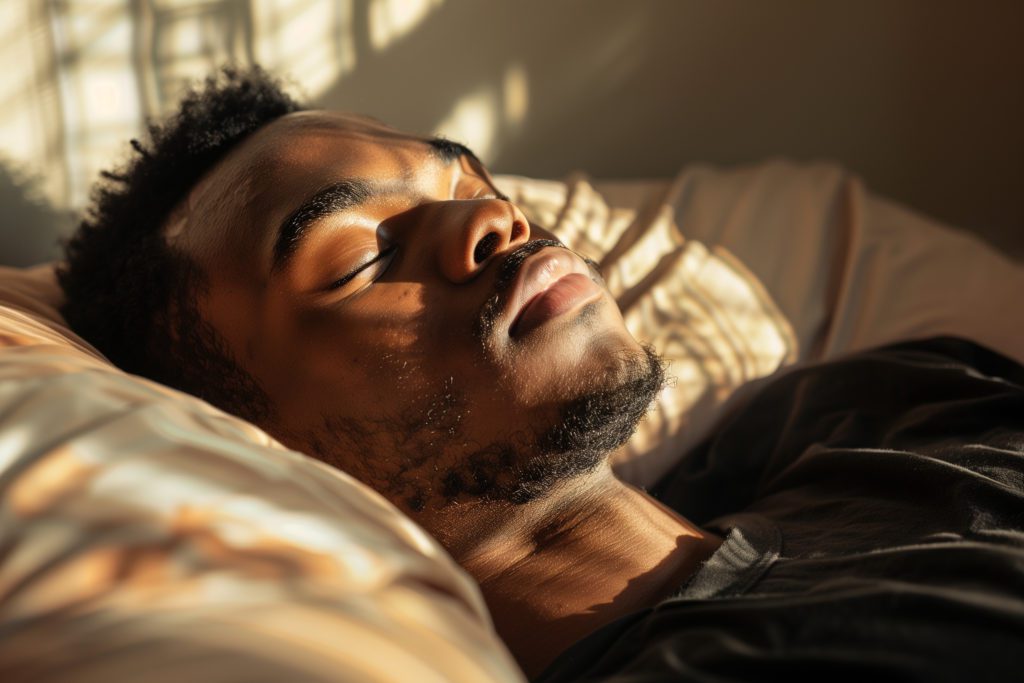
Sleep Onset and Creativity
Learn the connection between sleep onset and creativity to begin boosting creativity and solving problems using short naps.

Are you a secret genius in your sleep? It turns out that there are specific moments in the sleep cycle when our creative juices are working overtime. This might be why people say you should "sleep on" a problem that's hard to solve. If you're trying to optimize your brainpower, you need to know about the link between sleep onset and creativity.
The Incredible Power of Simply Falling Asleep
Yes, the simple act of falling asleep could help us to tap into the resourceful, creative side of the brain that's simply too "tapped out" during our waking hours. The research confirming this phenomenon was compelling enough for researchers to declare sleep onset a "creative sweet spot" after concluding a 2021 study. As part of the study, researchers looked at how brain activity common to the twilight zone between sleep and wakefulness (non-rapid eye movement sleep stage 1 or N1) ignites creative sparks. To achieve this, participants were exposed to mathematical problems without knowing that a hidden rule would allow them to be solved nearly instantly. When participants spent at least 15 seconds in N1 during a resting period, their chances of discovering the hidden rule trippled. However, this research shows that the "more of a good thing" rule doesn't necessarily apply. When participants reached deeper sleep, the effect actually vanished. This strongly suggests that there's a creative sweet spot within the very brief sleep-onset period. In order to tap into it, a person must be able to balance falling asleep quickly and easily against falling into a deep sleep.
Planning Your Sleep for Problem-Solving
The idea that you can do extraordinary things in your sleep isn't a fringe theory. Even MIT and Harvard Medical School researchers have latched onto a technique that people are calling "targeted dream incubation" to turn naps into productivity sessions. Researchers believe that a "cat nap" could be an incredible tool for solving a problem that feels unsolvable. However, it could take some intentionality to work.
Researchers have tested the theory that prompts can help to make the most of the very brief whisper of time when the creative mind is especially fertile during sleep onset. When conducting research, this looks like providing study participants with a prompt they should try to dream about. In real life, it could look like drawing your focus to the problem at hand while dozing off. When researchers tried prompting, they found that participants were able to generate more creative stories compared to people who either drifted off without a prompt or stayed awake.
While the idea that there's a very brief sweet spot that allows us to tap into the creative flow just as we're drifting off is something that researchers are just uncovering now, the link between naps and enhanced cognitive performance has been known for quite some time. Researchers believe that naps enhance our learning capabilities. One piece of research out of the University of Michigan found that people were less impulsive and had greater tolerance for frustration after waking from a 60-minute midday nap compared to people who watched a nature documentary instead of napping. A 2022 systematic review that looked at the effects of napping on cognition found that afternoon naps have a benefit based on multiple cognitive tests.
How to Make the Most of the Link Between Sleep Onset and Creativity
The truth is that tapping into the creative sweet spot that only happens in a small window of time while we're nodding off isn't always easy. Our modern society shuns napping. Despite countless studies touting the cognitive and performance benefits of napping, there's still a huge stigma tied to napping in American culture. Employees who are "caught" taking naps are thought to be lazy. Among those who work from the privacy of home, few would ever dare to admit to a boss or colleagues that they are slinking away to take a power nap. From a biochemical perspective, it appears that our bodies are almost pushing us to take a break in the middle of the day to recharge.
Research on the stigma of workplace napping found that there is an imbalance between two important processes that regulate wakefulness and sleep — the homeostatic sleep pressure and the circadian alerting signal. The homeostatic sleep pressure is the body’s need for sleep. This need builds up stronger the longer you are awake. The second process, the circadian alerting signal, is the body’s natural method for promoting wakefulness. It’s driven by the circadian rhythm. This imbalance between the two processes results in reduced alertness and increased sleepiness.
Evidence suggests that cognitive and emotional performance metrics show decreases in productivity. At the same time, research shows us that brief daytime naps lasting 10 to 20 minutes decrease subjective sleepiness, increase objective alertness, and improve cognitive performance. People who check out for a few minutes to nap in the afternoon will enjoy boosts in creative problem-solving, logical reasoning, and memory consolidation.
You may not be able to change society's mindset about napping overnight. There's a good chance you also won't be able to shift company culture at your workplace to get management to embrace penciled-in naps on the daily schedule. However, there are still some ways that you can tap into the power of cat naps to boost your creativity and cognition. Just be aware that these tips are only intended to be used in places where it's safe to nap. Avoid napping in public spaces or areas where you could be vulnerable while asleep. Here's how to make the most of a quick nap:
- Fall asleep with an intention on your mind. Ideally, this will be the unsolvable problem that you are bumping against while you're trying to get work done.
- Avoid falling into deep sleep. The ideal length for a sleep-onset power nap is 10 to 20 minutes. This can be hard to "guesstimate." It's best to actually track your sleep patterns for a few nights before attempting an optimized nap to see how quickly you phase into sleep cycles. Once you have a rough idea of how long it takes to drift out of the onset sleep phase, you can set your nap alarm for the transition point!
- Jot down thoughts upon waking. You want to capture any ideas that came to you while you were drifting off before you become fully conscious and distanced from the sleep experience.
- If you're self-conscious about napping because you have a snoring habit, consider learning techniques for how to stop snoring naturally.
Based on what we know about sleep onset and creativity, you may be able to make breakthroughs simply by prioritizing naps. Pillow offers easy sleep tracking to help you know exactly when you hit each cycle based on biological markers. Being more aware of your sleep cycles can help you to make every nap count!

Written by
Emily Mendez
Emily Mendez is a former therapist and mental health author. She is one of the leading voices in mental health. Emily's writing has appeared in eCounseling, SonderMind, and more. Emily is frequently interviewed by Healthline, Fatherly, INSIDER, Family Circle, and other national media for her advice and expert opinion on the latest mental health topics.
Download Pillow
Get help
Press & News
Legal
Connect
X (Twitter)
Company
Copyright © Neybox Digital Ltd.



